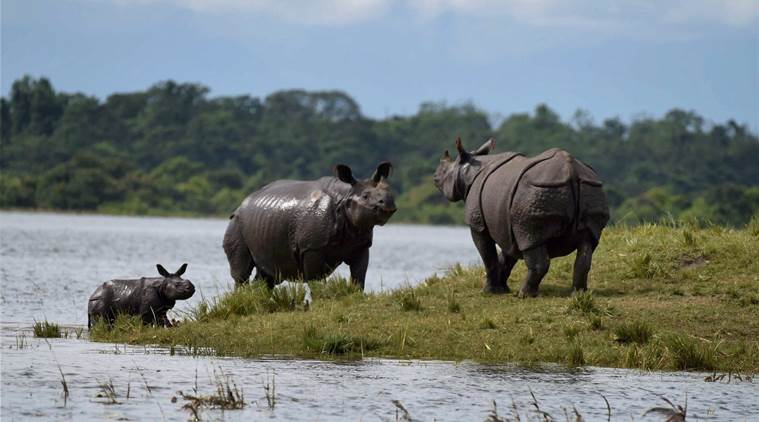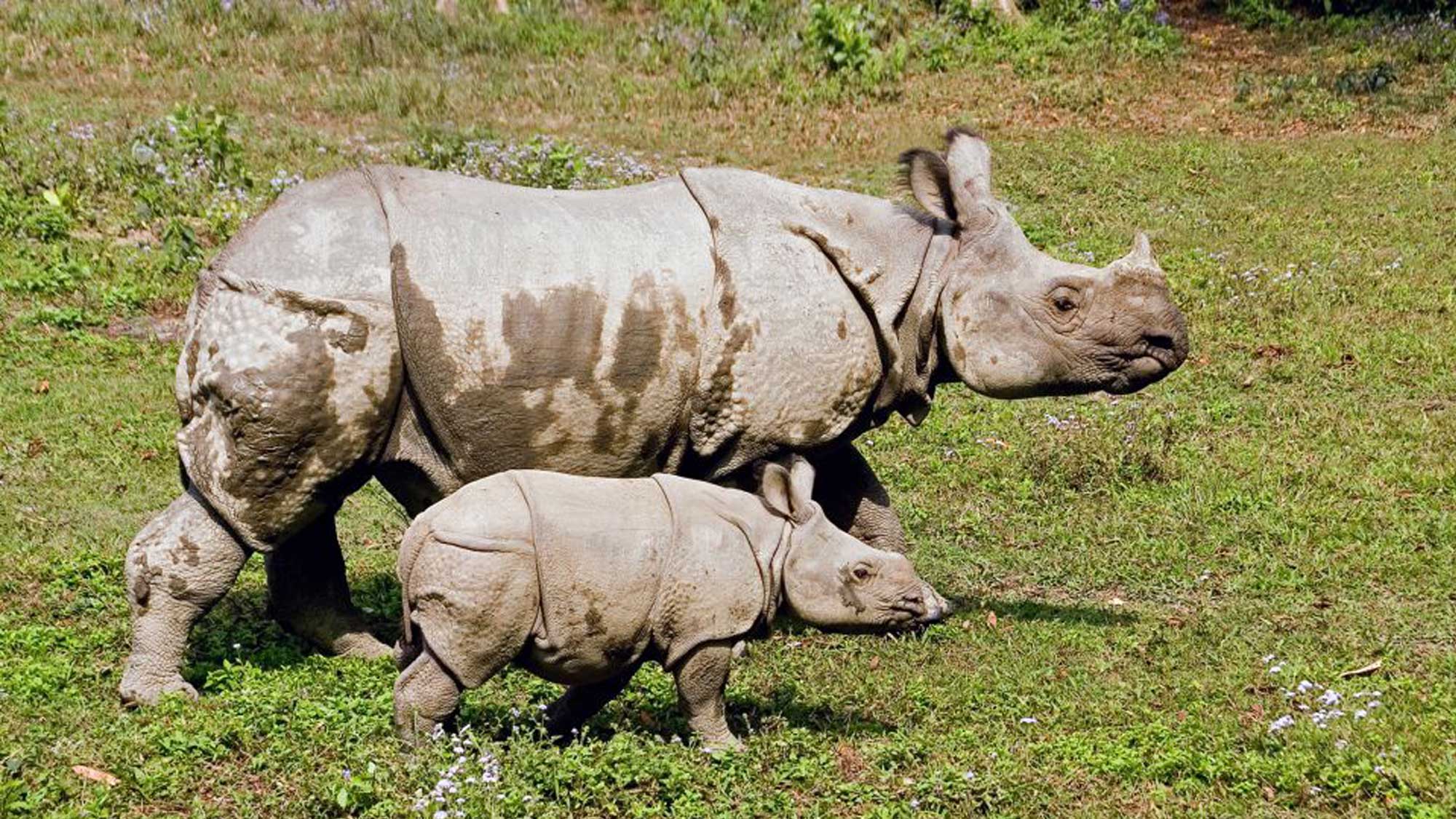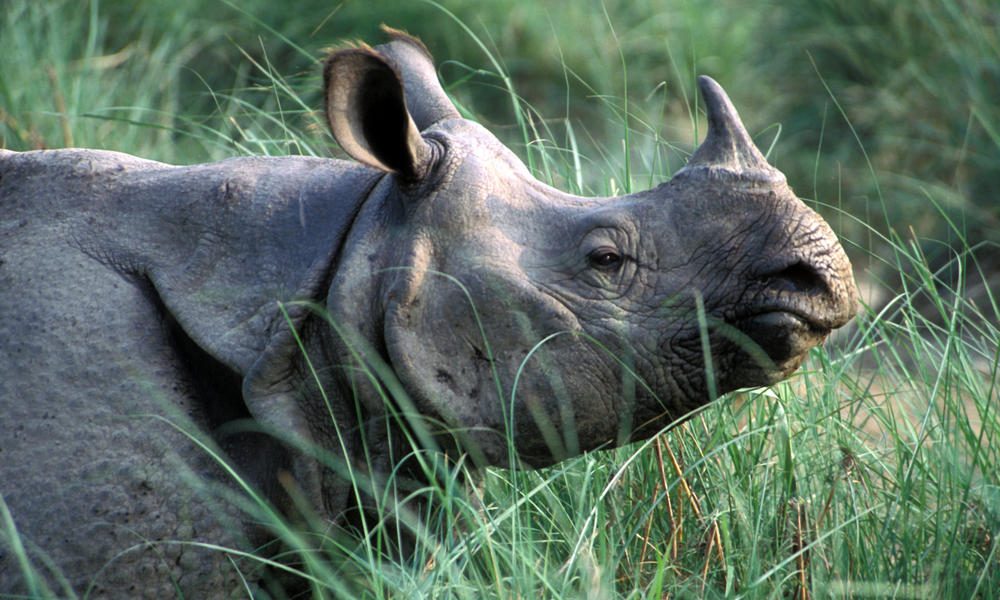One Horned Rhinoceros is an endangered species which can be found in South Asian territory. A matured rhino weights between 2 – 3 metric tons and it’s natural skin color is Grey. According to studies, the total number of rhino in the world is around 2000 where 100 rhinos: Kaziranga, National Park in Assam, India (1,200), and Chitwan National Park (CNP), Nepal (600). Nevertheless, illegal hunting of these animals is dragging their spices into extinction. In the black market, it’s horn and skin rumored to bid in a high prices.
Additionally, One Horned Rhinoceros usually have a solitary life span, however, they come outside together to gaze and wallow. Moreover, these animals has survived since Indus river valley period.
Nepal’s Topography Suitable For One Horned Rhino
One Horned Rhino live in sub-tropical flood land in which water and green grass are readily accessible throughout the year. Many rhinos now reside somewhere within frames of the adequate Chitwan National Park’s rhino habitat. When they gaze, they mainly seen in the large groups, and they mostly gaze plain orogenic grass. According to Chitwan National Park Rhino verge at the edge of Rapti, Narayani, Reu, and Digungre lands and Grasslands interspersed with patches of riverine forests together and together it makes about 30% of the park’s area.
Related Article: Things To Do In Bardia National Park

Perhaps it’s clear that green grass is the main food of these rhinos, but due to unsystematized population growth, and deforestation, the grassland around Chitwan is rapidly decreasing. At the same time, the high demand of its skin and horn has increased the number of its illegal hunting. Based on the 1960 survey, only 95 rhinos were remained in the Chitwan Valley, but the numbers has changed drastically, and it rises to 645 according to the 2015 survey report. In Nepal, Rhino could be translocated in case of epidemics like from Chitwan to the Bardia National Park and the Shuklaphanta National Park
Rhino Conservation in Nepal
In Nepal, Chitwan National Park is authorized to conserve Rhino, and it is one of the most visited places by tourist. It has a total area of 932 sq. km, and since 1984, it was listed in a World Heritage Site for its high biological diversity. Therefore, for Rhino it is the most favorable place to survive, and the Nepal government has also established an armed Rhino Patrol Unit since 1961 but they were not as effective as they supposed to.
Related Article: Things To Do In Chitwan National Parks

Evidently, the efforts and strategies of the Nepal’s Department of National Parks and Wildlife Conservation seems to be weak because the lack of strict policy and budget, One Horned Rhinoceros are about to extinct and even Nepalese government has been failing to spread awareness among the local people to save these animals from extinction.
If You Like This Article Please Check Out Other Interested Article At Our Site OMGNepal!!!!


